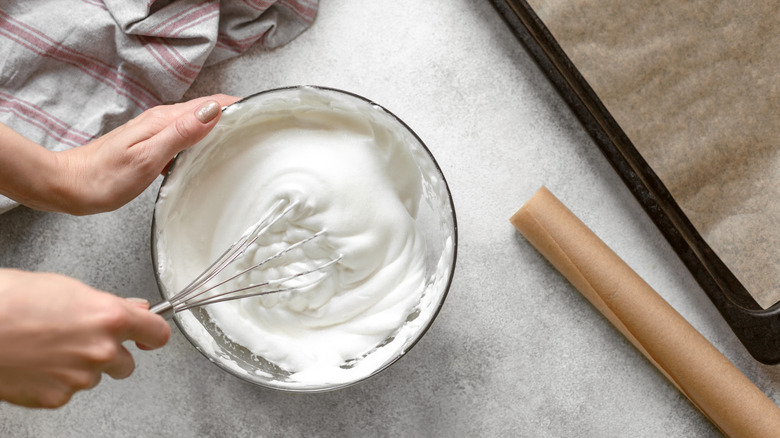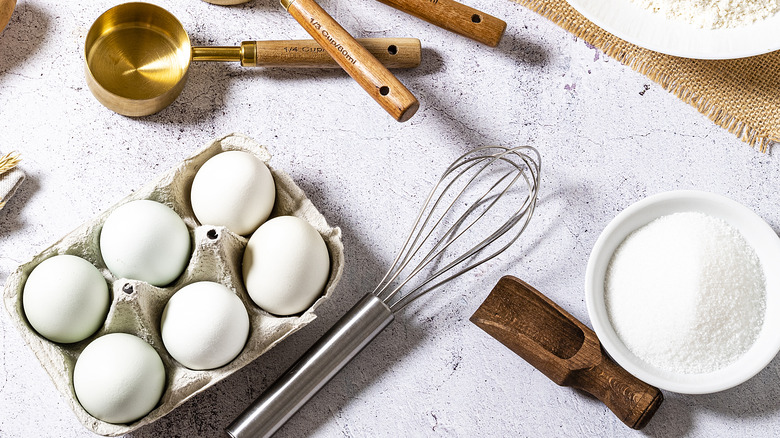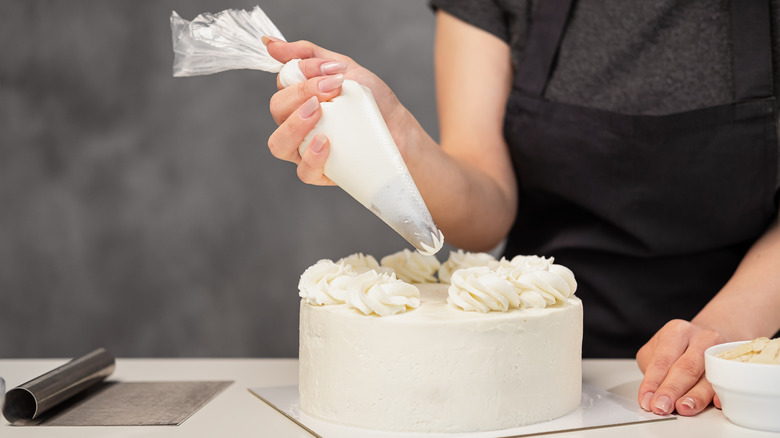The Crucial Difference In French Vs Swiss Vs Italian Buttercream
It is not necessary to embark on a grand tour of Europe to understand the differences between French, Swiss, and Italian buttercreams. However, it is important to understand what sets each one of these sweet toppings apart from one another if you're deciding which is best suited to your home baking project. Each of the buttercreams is composed of three ingredients: butter, sugar, and eggs. It is this final ingredient that varies most among them. Both Swiss and Italian buttercreams call for only the egg whites — while the French version makes use of just the yolks.
Besides the ingredient list, the techniques used to prepare each kind of buttercream differ from one to the other. For Swiss buttercream, a bain-marie is used as a way of applying heat to dissolve the sugar and blend the ingredients. For the French and Italian buttercreams, it is the addition of a hot sugar syrup that brings everything smoothly together.
Variations on eggs, sugar, and butter
It's amazing how combining just three ingredients together in slightly different ways can have such vastly different results. For this reason, before beginning the process of making any kind of buttercream, you'll want to pay close attention to the ingredient list. Consider the different kinds of butter you can use (for things like the best salt level) and the right temperature to make separating eggs (and whipping them to perfection) as easy as possible.
Temperature is key when it comes to making French, Swiss, or Italian buttercream. To start, you'll want all of your ingredients at room temperature. This will help the butter to melt and the sugar to dissolve evenly for a super creamy consistency. The sugar and egg white mix at the base of a Swiss buttercream needs to be cooked to 160 degrees Fahrenheit. For the French and Italian buttercreams, the sugar should instead reach 250 degrees Fahrenheit. Make sure to have a food-grade thermometer on hand.
Deciding which buttercream to make
French, Swiss, and Italian buttercreams are all delicious in their own unique ways, but each of these European styles is significantly more challenging than American buttercream. If you're pressed for time, you might want to opt for mixing just butter and sugar together the American way, without adding in eggs or any source of heat. But if you're feeling ambitious, there are a few things to consider when deciding which European buttercream is best for your baked goods.
All three buttercreams are delicious with a wide range of cakes, cupcakes, cookies, and many kinds of sweets, so when choosing between them, you'll need to think about balancing the other flavors present in your dessert. Because French buttercream makes use of egg yolks, rather than just whites, it is much richer than Italian or Swiss buttercream. However, don't try to pipe it as it won't hold the way the other two do.
If you're looking for something on the lighter side, opt for Italian or Swiss. Both of these buttercreams are also preferable if you're looking to prepare your dessert well in advance of an event. The Italian version is great for summer or if you want to get intricate with your decorating simply as it holds its shape so well. However, if you want to make your frosting fast, Swiss might be your best bet — it's also great for lighter cakes, like angel food, because it's the lightest of the three.



